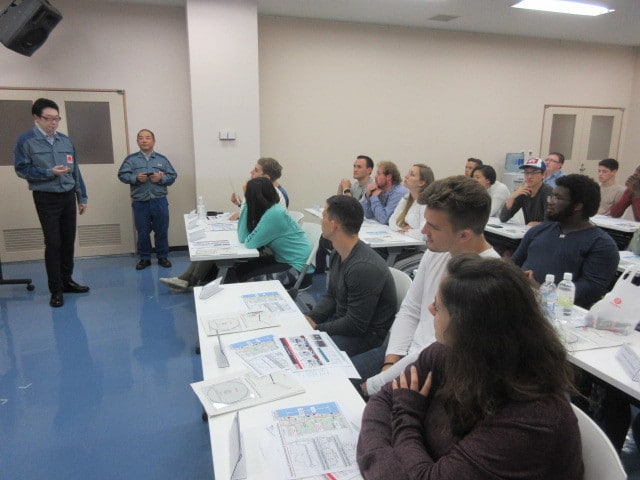At 2:46 PM on Friday, March 11, 2011, the Tōhoku earthquake struck off the east coast of Japan with devastating effects that would alter the course of Japanese history and energy policy.
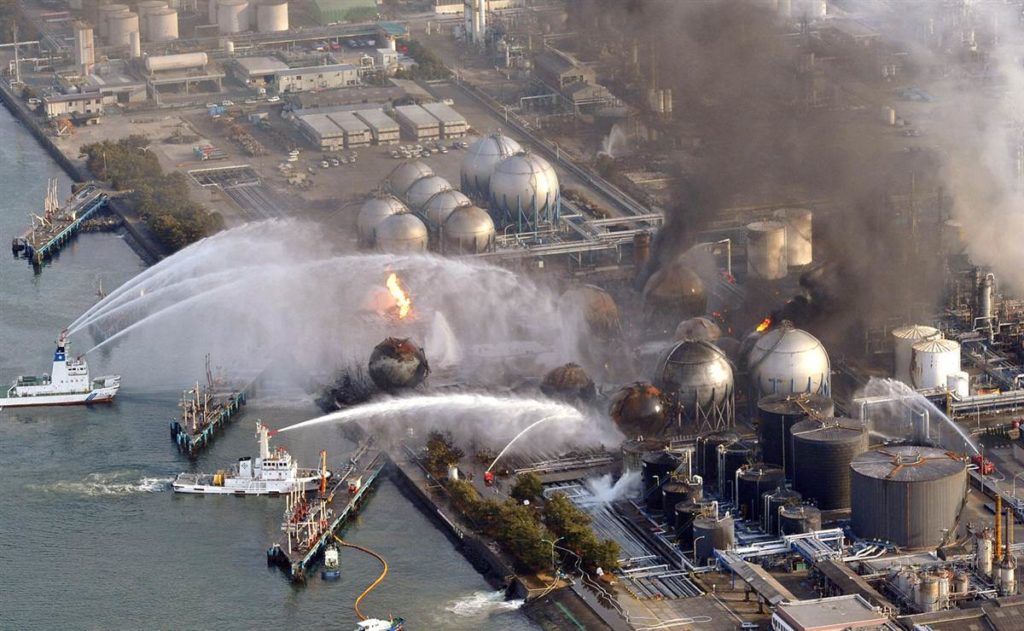
Photo: https://sites.suffolk.edu/
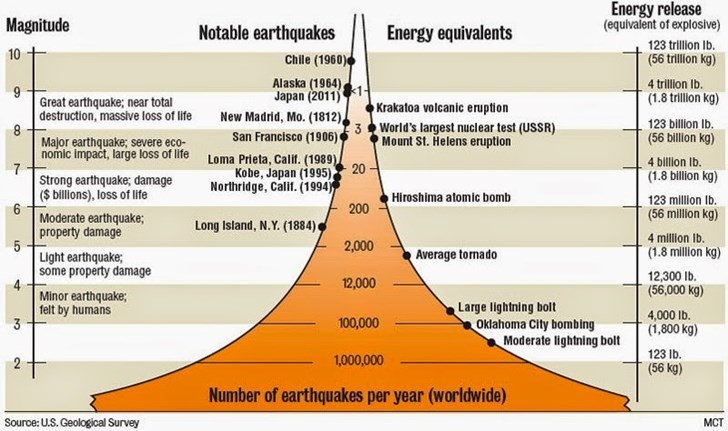
Measuring an immense 9.0 Mw on the moment magnitude scale, the approximate energy release was greater than that of the famous volcanic eruptions of Krakatoa and Mount St. Helens combined. The earthquake resulted in a tsunami that caused the death of more than 15,000 people, the evacuation of 470,000, and extensive structural damage – most notably, the Fukushima Daiichi Nuclear Power Plant.
There are six reactors at the Daiichi station. When the earthquake hit, three of these reactors that were generating electricity shut down immediately as power supplies were lost. Backup diesel generators began producing electricity, but the tsunami eventually reached the station, knocking out the backup generators. The loss of electricity prevented the reactors from being cooled. The reactor cores then began to overheat and react with steam, which ultimately lead to hydrogen explosions and the release of radioactive material into the atmosphere and nearby coastal waters. This resulted in extremely high radiation levels near the plant, leaving areas of land uninhabitable and resulting in the evacuation of more than 100,000 residents. Although the event at Daiichi did not cause any immediate casualties, it was classified as a Level 7 on the International Nuclear Event Scale, the highest rating and only such classification since the 1986 event in Chernobyl, Ukraine.
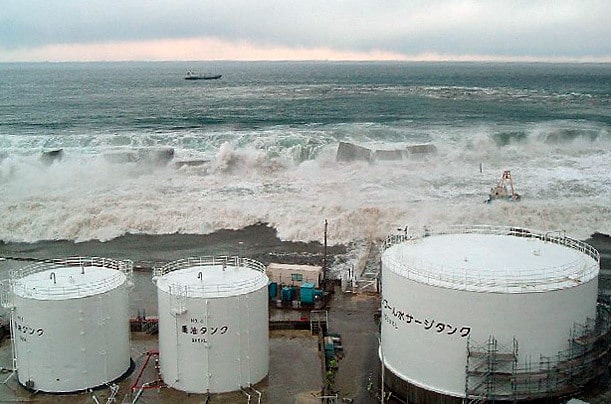
Nuclear energy has always garnered suspicion and criticism, and the Fukushima incident certainly added to public mistrust of nuclear technologies around the world. However, experts in the industry are assured that nuclear power generation is safe. It is a controversial debate that has led to continued research and development on one hand and full divestment on the other. For example, since the disaster in Fukushima, their local government has pledged to produce electricity from 100% renewable sources by 2040 – on the other hand, Japan’s federal government remains pro-nuclear. For further comparison, in April 2018, the New Jersey state government passed a bill that will provide a $300 million annual subsidy to the states’ existing nuclear power plants.
To understand both sides of the issue, let’s first take a look at how nuclear power generation works.
The Fundamentals
By definition, nuclear power generation is the conversion of energy available in nuclear bonds, that is the energy that holds the fundamental parts of an atom together. There are two methods that can produce nuclear energy: fission and fusion.
Fission is the splitting of a heavy atom. Uranium is the heaviest naturally occurring element on the planet, and a common variation of it, U-235, is used for nuclear fission reactions. This type of reaction is the most common, as U-235 is ideal for processes within the power plant, and exists as a relatively common resource.
Fusion is the opposite. Fusion occurs when lightweight atoms are forced to collide. Variations of the element Hydrogen (named Deuterium and Tritium), are used for this reaction. This is a technology of the future, as further research is needed to develop fusion into a reliable, large-scale form of energy generation. Deuterium is the most abundant nuclear fuel, and the reaction’s byproduct (Helium) is not radioactive – thus, this technology boasts very alluring prospects.
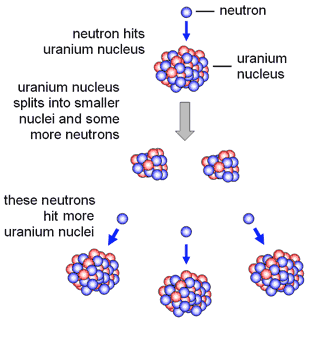
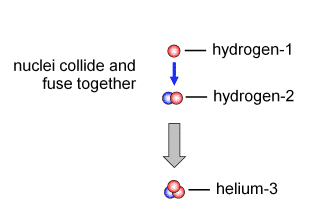
Nuclear bonds are very strong, so the energy delivered per unit mass of fuel from both fission and fusion reactions is very large relative to other fuels. For example, U-235 produces 2 million times the amount of energy as an equivalent mass of coal.
Pros & Cons
- no CO2 emissions
- high energy yield per unit mass of fuel
- low electricity costs
- the potential of fusion technology
- financial & health risks of power plant accidents
- long term disposal of nuclear waste
- potential for the development of nuclear weapons
- high capital/initial costs
The reputation of nuclear energy has suffered greatly from major accidents like in Fukushima, and also from its association with nuclear weapons. However, when weighing the pros and cons of nuclear technology, it is important to consider the current state of our global energy sector and changing climate. Nuclear energy is the largest nonfossil source of electricity in the world, and therefore contributes very much to the reduction of CO2 emissions – this is an important consideration for our urgent need to combat climate change. In addition, while people fear the health effects of nuclear incidents, the daily effects of fossil fuel usage on human health are far more prevalent. In many developing countries, the lack of adequate regulations for air pollution is responsible for hundreds of thousands of premature deaths per year. These effects can even be seen in developed countries like the United States, where some antiquated power plants still exist. Furthermore, the efficiency of nuclear power generation results in a low cost of electricity relative to other fuel sources, and future development of fusion technologies may lead to nuclear power generation that does not produce high-level radioactive waste.
On the other hand, opening a nuclear power plant involves very high initial costs, and while technology and management have improved over the years, accidents can happen. When they do, it can result in the loss of life, health, and massive financial investments. In addition, current nuclear power generation produces radioactive byproducts that need to be disposed of. The technologies necessary for handling radioactive waste are unique to nuclear energy, and require major investment of money and time; high-level nuclear waste will remain radioactive for thousands of years. Lastly, if a country possesses the means to operate a nuclear power plant, it may also be capable of developing nuclear weapons. In fact, nuclear energy generation and weapons development can exist in the same facility. In light of recent events and issues surrounding nuclear weapons, the harmful real-world potential of this technology can be easily imagined.
When considering the pros and cons of nuclear energy, it is difficult to decide which side of the argument is stronger. Regardless of which way you lean, it is important to consider the implications of nuclear energy on a case to case basis. For Fukushima, it has been decided that the potential of geologic events to disrupt nuclear power generation to the point of public and environmental harm is too great to continue to rely on nuclear energy.
To learn more about nuclear energy, the decommissioning of nuclear power plants, and Fukushima’s push for 100% renewable energies by 2040, join TGP students in Japan as we pursue the global ideals of sustainable development.
